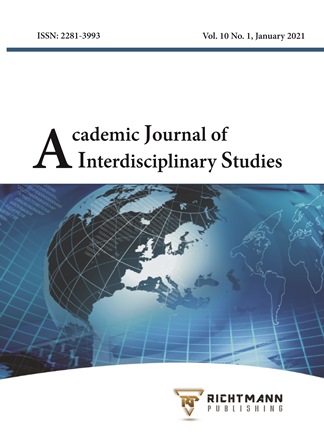A Survey of Agglomeration Determinants in Indonesia
DOI:
https://doi.org/10.36941/ajis-2021-0026Keywords:
Agglomeration, Multiplier effect, Economic efficiency, IndustrializationAbstract
This study aims to analyze the determinants of agglomeration in Indonesia by including research variables, namely the Exchange Rate (ER), Agglomeration, Williamson index (IW), Regional Income (RI), Domestic Investment (DI), Length of Road (LR), and Regional Expenditures (RB). The analysis method in this research was to estimate panel data and econometric tests, including heteroscedasticity test, multicollinearity test, Chow test, Hausman test, and t-statistic test. The data were obtained from Bank Indonesia (BI), and the Central Statistics Agency (BPS) from 2010 to 2017. The results of the study showed that agglomeration in Indonesia was affected by changes in the Exchange Rate (ER), Regional Expenditure (RB), Regional Income (RI), Domestic Investment (DI), Length of Road (LR), and Williamson index (IW). An integrated policy needs to be formulated to improve economic efficiency through the development of production chains and the utilization of regional economies to encourage national economic growth.
Received: 8 September 2020 / Accepted: 18 November 2020 / Published: 17 January 2021
Downloads
Downloads
Published
Issue
Section
License

This work is licensed under a Creative Commons Attribution-NonCommercial 4.0 International License.
This work is licensed under a Creative Commons Attribution-NonCommercial 4.0 International License.








